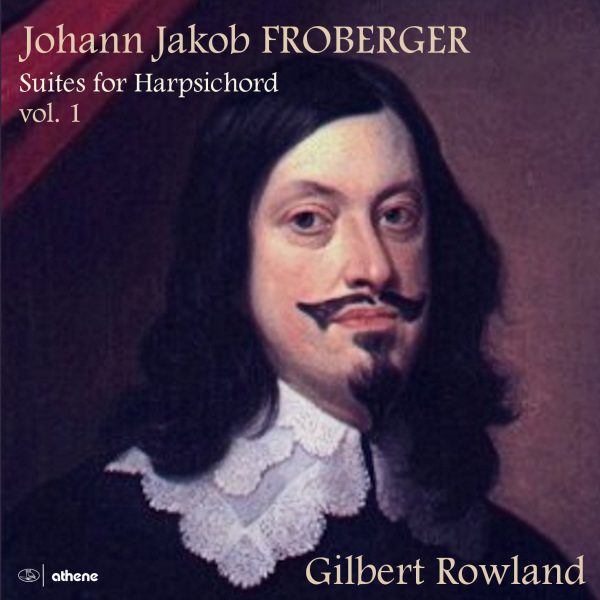Fanfare
Johann Jakob Froberger is probably one of the chief composers for the keyboard from the 17th century, along with Girolamo Frescobaldi. The son of the Kapellmeister to the court in Stuttgart, he excelled in his studies under Frescobaldi, returning to Vienna to a lucrative position at the Holy Roman court. During his time there, he became an international personage, touring much of Europe and earning a reputation for his performances. Although he was dismissed in 1657, he returned to Wurttemberg, where he spent the remainder of his life. Well liked for his ability and copasetic per¬sonality, Froberger had his music performed throughout Europe.
Of course, the suites were the core of his output, and this first volume indicates his productivity. There are 12 of them spread across two discs, almost all of which conform to the formula of an open¬ing Allemande, a Courante, a Sarabande, and a Gigue to conclude, though there is some rearrangement of the order from time to time. The only standout is his G-Major Suite subtitled “Auff die Mayerin,” in which the opening movement is based upon a German folk song. This serves as a sort of theme for the remainder of the suite, in effect becoming a harbinger of the adoption of folk ma¬terial in later music.
Several examples of this disc will suffice to outline the nicely thick, rich sound of Gilbert Rowland’s harpsichord registration. The Allemande of the first E-Minor Suite, for example, proceeds in a solemn manner, with a registral change part way through that softens the tone and the discrete ornamentation. The gnarly music is done without hesitancy, and the result is a pensive, even solemn movement. The Courante of the D-Minor Suite rolls right along, with full texture and often tortuous ornamented lines, all done with ease and power. The Sarabandes are often quite lyrical, if stately, such as that of the G-Minor Suite. Here the switch in registration makes the contrasts stand out, of¬fering a bit of a textural contrast that fully develops the lines. As for the gigues, the bouncy move¬ment from the F-Major Suite (noted as “Chique”) rocks along with some obvious French ornamen¬tation, a toe-tapping piece. The folk song suite begins with a set of five variations on the tune, first played almost straight with only a modicum of ornamentation. These become progressively more challenging over the course of the movement, with swirling rhythmically expanded lines and in the case of the final variation a set of tortuous chromatic counterpoint. One doesn’t mind that the gigue is missing, as the final two Sarabandes offset the more active opening variations and Courante.
This is presumably the first volume of the complete suites, and harpsichordist Rowland performs with care and excellent tempos. The registrations, as noted, are all calculated to provide the necessary contrast, while the ornamentation is done with exquisite taste and a deft touch. All in all, this is an ex¬cellent disc and one that should be in any collection. It does Froberger proud.
@divineartrecordingsgroup
A First Inversion Company
Registered Office:
176-178 Pontefract Road, Cudworth, Barnsley S72 8BE
+44 1226 596703
Fort Worth, TX 76110
+1.682.233.4978












